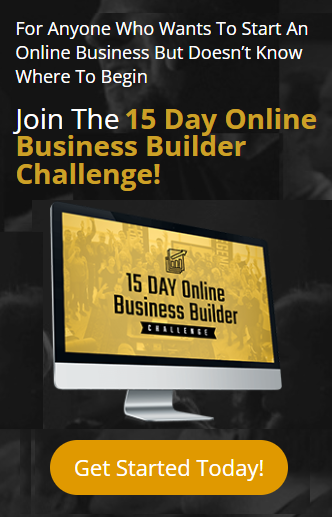Here are 10 proven ways to increase website traffic that you can start using today.
1) Use Keywords in Your Title
One of your main goals when creating a new piece of content should be to rank well in search engines. The use of keywords and keyword phrases within your titles can help you achieve that goal, but don’t overdo it by stuffing them in.
For example, if you’re writing an article about website traffic, it may seem tempting to put phrases like increase website traffic in your title. However, make sure those terms actually appear in your content—and not just as part of your title—so that you don’t end up with a big penalty from Google for spamming their results.
It should go without saying, but always check Google Webmaster Tools after publishing any new content so you know how it ranks for any chosen keywords or keyword phrases.
If necessary, tweak your content accordingly. There are tools available online that allow you to do things like view how many times each word is used on a page (i.e., word density) along with other useful information such as link data (which words are linked to most often).
You can also use these tools yourself prior to posting anything on your site so you know whether certain words will benefit you or hurt you when it comes time for Google to index and return search engine results.
In addition to being aware of your overall word count, you want to keep track of keyphrases that relate directly to your business as they could mean additional business down the road. Keyphrases aren’t limited strictly to meta tags however – they need to be sprinkled throughout all copy and placed strategically throughout your website copy.
2) Use Keywords in Your URL
If you want more people to find your website and read your content, try using keywords in your URL. This is an easy way for Google and other search engines to determine what topics are important on your site.
For example, if you write a lot about health issues, adding something like heart disease or diabetes in your title tag can attract more people looking for information on those conditions.
In turn, they may click through and become regular readers of your content. Not only will SEO experts tell you that it’s good practice to use keywords in your URLs, but it also makes things easier for users who have bookmarked your website or frequently share it with others.
Using words related to your content will make finding that exact page faster and easier than having several different versions of pages all with different URLs scattered around.
Remember, there are no hard rules when it comes to creating effective URLs—use whatever works best!
However, there are some basic rules to remember when trying to optimize your website traffic: keep them short (2-4 words), don’t include special characters (hyphens, underscores), don’t repeat words from titles/headlines, and keep them simple enough so it doesn’t look spammy.
Overall, keep your reader in mind when creating website URLs; think about how someone might go about locating a specific piece of content on your site.
3) Create Attractive Pages and Posts
When creating content for your website, it’s important that you create posts and pages that are appealing to potential visitors. What do we mean by attractive?
Good design, writing style, and usefulness. The best websites have all three of these qualities. Here are a few tips on how you can ensure your posts and pages stand out from your competitors.
When brainstorming new ideas or topics for new posts or pages, keep an eye out for what people in your niche are currently struggling with.
If they have been searching Google in recent months or years, chances are they need information or answers quickly! Now is the time to provide them with what they need!
Take a look at some of your competitor’s websites. What works well and what doesn’t? What would you change about their site if you were able to?
Take notes and use that as inspiration when building and designing yours. Many businesses choose catchy names for their blogs, but simple titles like About Us or Our Company can actually be quite effective.
Keep things clear and concise. Make sure you include links to all social media profiles on your website so visitors can easily follow along with all of your updates without even needing to visit Facebook, Twitter, or other sites. Put these links on every page so it’s impossible not to see them.
4) Make it Visually Appealing
There are a lot of effective ways to improve your site’s appearance, including optimizing your images and creating effective calls-to-action. But it doesn’t end there; you also need search engine optimization (SEO) to attract people outside of your network.
Here are a few tips for getting more eyes on your website
✔️ Plan Your Audience If you already have an idea of who you want to draw in, things will be much easier down the road. Focus your strategy around a type of person rather than simply making assumptions about everyone who lands on your page.
Be specific: what gender are they? What interests do they have? Is their age an important factor? This gives you better insight into where and how to focus content creation and marketing efforts.
✔️ Create Compelling Content Quality is key here—you know that if your content isn’t good enough, no one will stick around. Make sure you plan out every detail before proceeding so nothing gets overlooked later.
Keep it as professional as possible and avoid being promotional if at all possible.
✔️ Publish Frequently Whether your audience is big or small, publishing frequently works. Posting consistently lets readers see that you’re always open for business and makes them feel like they can rely on you.
Try not to publish too many times during peak hours though, or else readers might lose interest and bounce right off your page when trying to navigate away from it quickly.
✔️ Identify New Avenues to Reach Readers. Perhaps you don’t have that large of an existing following yet. That’s fine! You can identify other avenues through which to reach a more diverse audience, such as networking events or local meetups related to your niche.
Remember that social media plays a major role here too, especially with younger audiences; make sure everything is optimized for Facebook, Twitter, Instagram and others.
5) Optimize For Local Search
Make sure your website is optimized for local search. Local businesses that rank well on Google Maps receive 40% of their new clients from online searches, according to recent research from Bright Local.
Start by making sure your address and phone number are accurate on every page of your site. You should also make it easy for users to find you with a prominent Contact Us or Call Now button—don’t hide it in a sidebar or deep within your website.
For more tips, check out our guide to ranking on maps . It can be time-consuming and challenging, but proper optimization of your website for local search could help you attract plenty of potential customers who need what you have.
Additionally, a lot of people think that simply having an optimized website isn’t enough these days; they want to know what steps they can take right now to get more traffic.
This is why we recommend Bright Local, who provide you the tools to rank higher, improve your reputation, and generate more traffic and leads from local search. They cover everything we teach here on randeez.com in detail plus so much more.
6) Leverage Social Media
If you want to know how to increase website traffic, one of your best options is leveraging social media. Social networks are perfect for helping you build up a following that can drive traffic back to your site.
Of course, there’s more than one way to leverage social media effectively; here are some ways that have worked well for other websites and blogs.
✔️ Use search-optimized headlines on your posts: When someone does a Google search for a topic related to what you cover on your site, it helps if they see an easily clickable headline from your own website at the top of their results rather than having to click through from another news source like Mashable or TechCrunch.
This will help get your content in front of more people who are looking for specific kinds of information, and therefore help with…
✔️ Social sharing: Driving traffic using social media means making sure people on these platforms actually read your articles after reading them instead.
Whenever possible (and without sacrificing accuracy), make sure each post includes elements that make it easy to share across different types of social platforms including Twitter and Facebook as well as industry-specific sites like Reddit or LinkedIn groups relevant to your niche.
✔️ Build up your community with email newsletters: While you can certainly drive traffic to your site through one-off links posted to third party sites, staying top of mind for more regular readers involves having a presence in their inboxes.
7) Link Out to Related Sites
Offering visitors links to other relevant websites is a great way to help them find more information that’s related to your own site.
Not only will you be adding value, but you’ll also be positioning yourself as an authority in your industry by pointing people toward other industry leaders and high-quality content.
Make sure when you are linking out it is appropriate, on topic and helpful! Do not use self-promotion or too many ads of any kind. Use caution with advertising! (shopping carts, ads, promos etc.).
Advertisements can look spammy and act against search engine algorithms. You do not want to risk having your website penalized or worse deindexed from engines such as Google and Bing.
You don’t want to create a negative experience for users either. Just because it is allowed, doesn’t mean it isn’t frowned upon by users.
One approach would be to include text links throughout your website/blog: Do you have interest in selling clothing? How about providing some information about sources for wholesale clothing online.
Every time you refer to clothing on your page, you could include a link to another site giving additional information on where consumers can go if they are interested in finding out more about buying wholesale clothes online.
8) Get Backlinks from Other Websites
One of easiest and most effective ways to get more traffic is by building high-quality backlinks from other websites. The more relevant sites link back to your site, the better a chance you have of ranking well in search engines.
Focus on getting backlinks from sites in similar industries, as these will be most effective for your efforts. If you can’t get relevant links directly, try paid or volunteer forum posts. Just be sure not to overdo it; using any form of manipulation or trickery might damage your reputation with customers and others online.
Don’t forget that website analytics are essential when trying to determine which approach (if any) is working best for you—so don’t assume anything based solely on good or bad feelings.
Also remember that even if one method doesn’t work, something else may; many businesses see positive results through several different strategies.
Ultimately, success hinges on a lot of trial and error. And remember: There is no one way to reach your target audience…no single magic bullet. Instead, embrace variety!
It allows you to take advantage of circumstances as they arise without sticking only to methods that never seem to work for you . . . at least not consistently.
But how do you know what will work best? By experimenting and testing things out. Keep track of results so you have data to rely on later when determining what worked, what didn’t, and why.
9) Add Links to Your Email Signature
This seems like a small thing, but your email signature is an excellent opportunity to sneak in a few more links.
While you don’t want every email with your name on it to lead back to your website, setting up each personal and work account with links can make a huge difference over time.
Link to Other Pages on Your Site: If someone takes the time to read something you’ve written or gives it a moment of their attention, consider linking directly to another post or page of content on your site.
You shouldn’t do it for every single piece that goes out—make sure it makes sense for whatever you wrote—but I think people will appreciate knowing there are other resources out there if they want them.
And you never know who might show up! -) Cross-Promote Your Own Content on Social Media Networks: Another easy way to get more visibility for your posts is by simply talking about them in other places online.
Make sure people know about new posts as soon as they go live, so use social media to cross-promote old articles from time to time as well.
10) Keep an Eye on Analytics
Having an analytics suite will help you identify how well your site is performing and what’s working and what isn’t. Before you make any changes, though, check out your competitors sites and see where they’re doing things differently than you are.
How are their traffic numbers? What pages do they have a lot of traffic for? Where do visitors drop off? All of these questions should be answered before making changes on your site.
Also think about how people use your website. Make sure you’re presenting information in a way that makes sense to users, but also from a business standpoint so that those who run your company can track sales through specific areas of the site.
To learn how I was able to quit my job and drive traffic to my websites – Click here…







